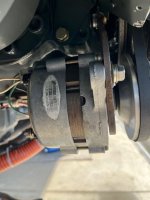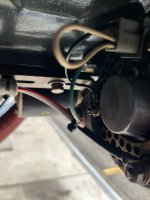MrNomad
Well Known Member
How to test an alternator - go to Youtube
YOUTUBE has many videos on how to test diodes. Recently, the alt in my Chev died. Following the video on Youtube (searched HOW TO TEST DIODES), I was able to find the specific diode that failed and replace it from spare parts.
Cost for the repair was zero, education was priceless.
I'm not an EE, but my guess is the process is the same.
YOUTUBE has many videos on how to test diodes. Recently, the alt in my Chev died. Following the video on Youtube (searched HOW TO TEST DIODES), I was able to find the specific diode that failed and replace it from spare parts.
Cost for the repair was zero, education was priceless.
I'm not an EE, but my guess is the process is the same.






